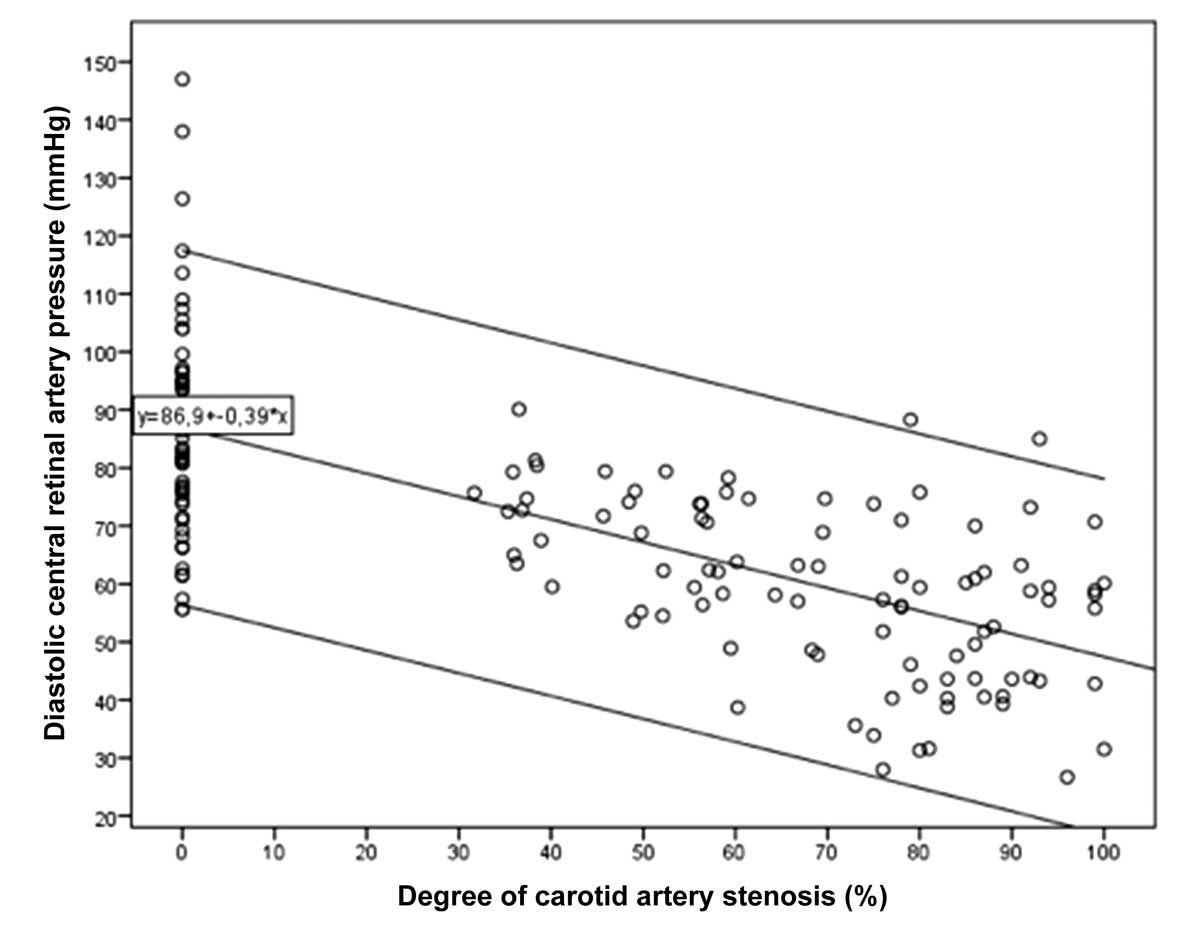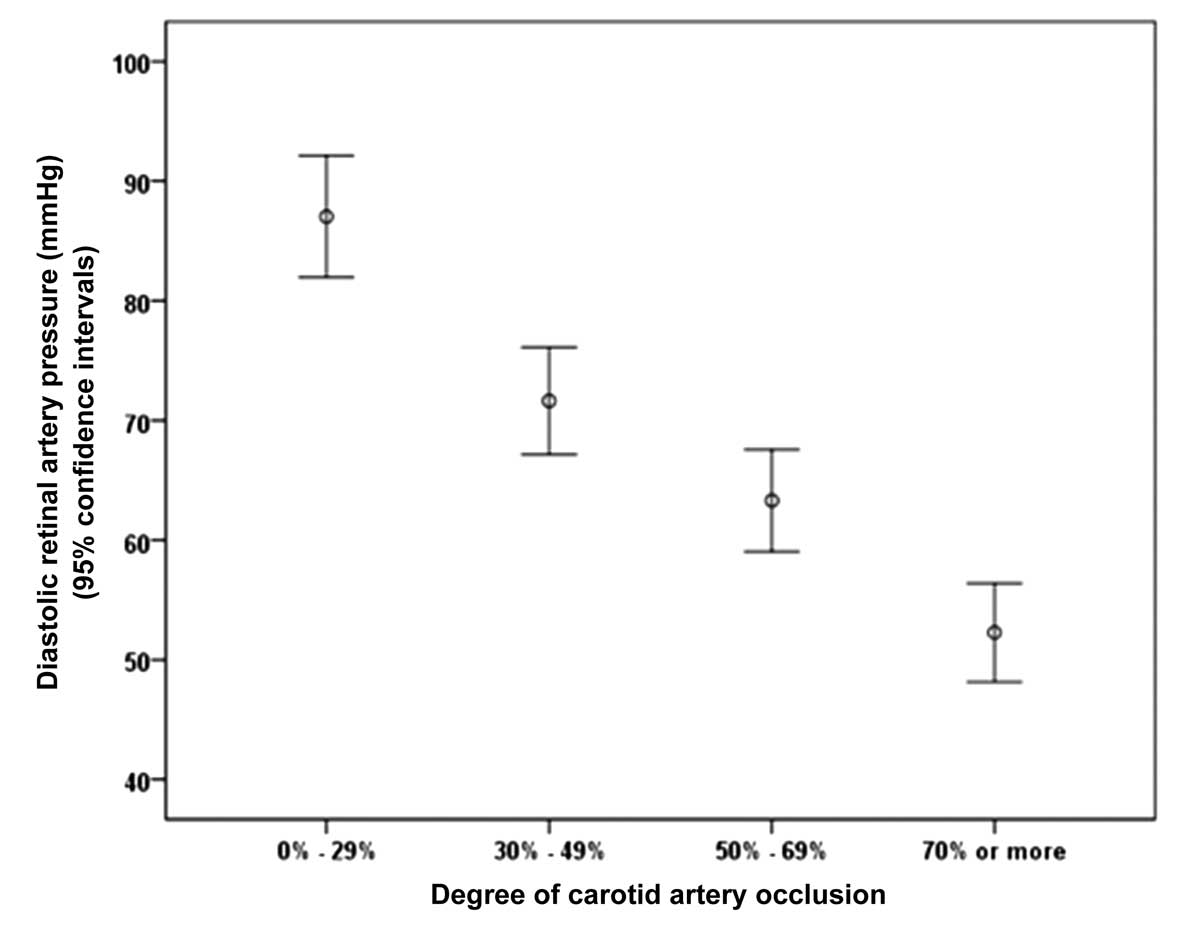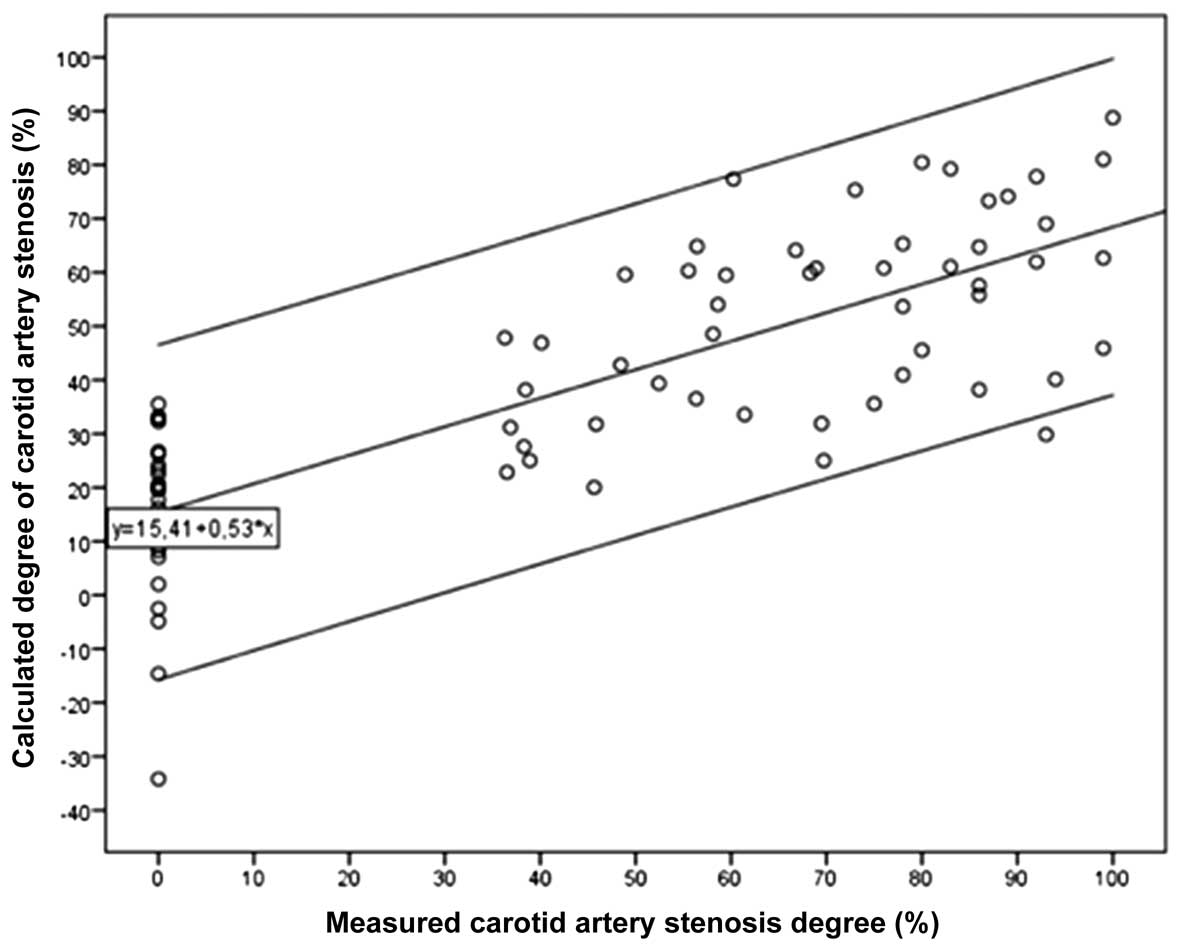|
1
|
Hedges TR, Weinstein JD, Kassell NF and
Langfitt TW: Correlation of ophthalmodynamometry with ophthalmic
artery pressure in the rhesus monkey. Am J Ophthalmol.
60:1098–1101. 1965. View Article : Google Scholar : PubMed/NCBI
|
|
2
|
Wunsh SE: Ophthalmodynamometry. N Engl J
Med. 281:4461969. View Article : Google Scholar : PubMed/NCBI
|
|
3
|
Galin MA, Baras I and Dodick JM:
Semiautomated suction ophthalmodynamometry. Am J Ophthalmol.
68:237–240. 1969. View Article : Google Scholar : PubMed/NCBI
|
|
4
|
Bettelheim H: The clinical significance of
ophthalmodynamometry and ophthalmodynamography. Klin Monatsbl
Augenheilkd. 155:769–791. 1969.(In German). PubMed/NCBI
|
|
5
|
Van der Werff TJ: The pressure measured in
ophthalmodynamometry. Arch Ophthalmol. 87:290–292. 1972. View Article : Google Scholar : PubMed/NCBI
|
|
6
|
Krieglstein GK and Silva FA: Comparative
measurements of the ophthalmic arterial pressure using the Mikuni
dynamometer and the Stepanik-arteriotonograph. Albrecht Von Graefes
Arch Klin Exp Ophthalmol. 212:77–91. 1979.(In German). View Article : Google Scholar : PubMed/NCBI
|
|
7
|
Entenmann B, Robert YC, Pirani P,
Kanngiesser H and Dekker PW: Contact lens tonometry - application
in humans. Invest Ophthalmol Vis Sci. 38:2447–2451. 1997.PubMed/NCBI
|
|
8
|
Morgan WH, Yu DY, Cooper RL, Alder VA,
Cringle SJ and Constable IJ: Retinal artery and vein pressures in
the dog and their relationship to aortic, intraocular and
cerebrospinal fluid pressures. Microvasc Res. 53:211–221. 1997.
View Article : Google Scholar : PubMed/NCBI
|
|
9
|
Firsching R, Schütze M, Motschmann M,
Behrens-Baumann W and Meyer-Schwickerath R: Non-invasive
measurement of intracranial pressure. Lancet. 351:523–524. 1998.
View Article : Google Scholar : PubMed/NCBI
|
|
10
|
Jonas JB: Retinal arterial collapse
pressure in eyes with retinal arterial occlusive diseases. Br J
Ophthalmol. 88:5892004. View Article : Google Scholar : PubMed/NCBI
|
|
11
|
Jonas JB and Niessen A:
Ophthalmodynamometric diagnosis of unilateral ischemic
ophthalmopathy. Am J Ophthalmol. 134:911–912. 2002. View Article : Google Scholar : PubMed/NCBI
|
|
12
|
Jonas JB and Hennerici M:
Ophthalmodynamometry for diagnosis of dissection of internal
carotid artery. Graefe Arch Clin Exp Ophthalmol. 244:129–130. 2006.
View Article : Google Scholar
|
|
13
|
Murray CJ, Barber RM, Foreman KJ, Ozgoren
Abbasoglu A, Abd-Allah F, Abera SF, Aboyans V, Abraham JP, Abubakar
I, Abu-Raddad LJ, et al: GBD 2013 DALYs and HALE Collaborators:
Global, regional, and national disability-adjusted life years
(DALYs) for 306 diseases and injuries and healthy life expectancy
(HALE) for 188 countries, 1990–2013: Quantifying the
epidemiological transition. Lancet. 386:2145–2191. 2015. View Article : Google Scholar : PubMed/NCBI
|
|
14
|
Morgan WH, Cringle SJ, Kang MH, Pandav S,
Balaratnasingam C, Ezekial D and Yu DY: Optimizing the calibration
and interpretation of dynamic ocular force measurements. Graefes
Arch Clin Exp Ophthalmol. 248:401–407. 2010. View Article : Google Scholar : PubMed/NCBI
|
|
15
|
Jonas JB: Reproducibility of
ophthalmodynamometric measurements of the central retinal artery
and vein collapse pressure. Br J Ophthalmol. 87:577–579. 2003.
View Article : Google Scholar : PubMed/NCBI
|
|
16
|
Zaret CR, Sacks JG and Holm PW: Suction
ophthalmodynamometry in the diagnosis of carotid stenosis.
Ophthalmology. 86:1510–1512. 1979. View Article : Google Scholar : PubMed/NCBI
|
|
17
|
Hayreh SS and Jonas JB: Optic disk and
retinal nerve fiber layer damage following transient central
retinal artery occlusion: An experimental study in rhesus monkeys.
Am J Ophthalmol. 129:786–795. 2000. View Article : Google Scholar : PubMed/NCBI
|
|
18
|
North American Symptomatic Carotid
Endarterectomy Trial Collaborators: Beneficial effect of carotid
endarterectomy in symptomatic patients with high-grade carotid
stenosis. N Engl J Med. 325:445–453. 1991. View Article : Google Scholar : PubMed/NCBI
|
|
19
|
European Carotid Surgery Trialists'
Collaborative Group: MRC European Carotid Surgery Trial: Interim
results for symptomatic patients with severe (70-99%) or with mild
(0-29%) carotid stenosis. Lancet. 337:1235–1243. 1991. View Article : Google Scholar : PubMed/NCBI
|
|
20
|
Sanborn GE, Miller NR, McGuire M and Kumar
AJ: Clinical-angiographic correlation of ophthalmodynamometry in
patients with suspected carotid artery disease: A prospective
study. Stroke. 12:770–774. 1981. View Article : Google Scholar : PubMed/NCBI
|
|
21
|
Mullie MA and Kirkham TH:
Ophthalmodynamometry revisited. Can J Ophthalmol. 18:165–168.
1983.PubMed/NCBI
|
|
22
|
Weinberger J: Clinical applications of
noninvasive carotid artery testing. J Am Coll Cardiol. 5:137–148.
1985. View Article : Google Scholar : PubMed/NCBI
|
|
23
|
Barańska-Gieruszczak M,
Laskowska-Studniarska W, Myga W and Ryglewicz D: Diagnostic value
of ultrasonography and ophthalmodynamometry in the diagnosis of
stenosis and occlusion of the internal carotid artery. Neurol
Neurochir Pol. 21:281–285. 1987.(In Polish). PubMed/NCBI
|
|
24
|
Morgan WH, Hazelton ML, Balaratnasingamm
C, Chan H, House PH, Barry CJ, Cringle SJ and Yu DY: The
association between retinal vein ophthalmodynamometric force change
and optic disc excavation. Br J Ophthalmol. 93:594–596. 2009.
View Article : Google Scholar : PubMed/NCBI
|
|
25
|
Morgan WH, Yu DY, Alder VA, Cringle SJ and
Constable IJ: Relation between pressure determined by
ophthalmodynamometry and aortic pressure in the dog. Br J
Ophthalmol. 82:821–825. 1998. View Article : Google Scholar : PubMed/NCBI
|
|
26
|
Jonas JB and Harder B:
Ophthalmodynamometric estimation of cerebrospinal fluid pressure in
pseudotumor cerebri. Br J Ophthalmol. 87:361–362. 2003. View Article : Google Scholar : PubMed/NCBI
|
|
27
|
Jonas JB: Central retinal artery and vein
pressure in patients with chronic open-angle glaucoma. Br J
Ophthalmol. 87:949–951. 2003. View Article : Google Scholar : PubMed/NCBI
|
|
28
|
Jonas JB: Ophthalmodynamometric
measurement of orbital tissue pressure in thyroid-associated
orbitopathy. Acta Ophthalmol Scand. 82:2392003. View Article : Google Scholar
|
|
29
|
Jonas JB and Harder B:
Ophthalmodynamometric differences between ischemic versus
non-ischemic retinal vein occlusion. Am J Ophthamol. 143:112–116.
2007. View Article : Google Scholar
|
|
30
|
Ishikawa K, Kimura I, Shinoda K, Eshita T,
Kitamura S, Inoue M and Mashima Y: In situ confirmation of retinal
blood flow improvement after carotid endarterectomy in a patient
with ocular ischemic syndrome. Am J Ophthalmol. 134:295–297. 2002.
View Article : Google Scholar : PubMed/NCBI
|
|
31
|
Cohn EJ Jr, Sandager GP, Benjamin ME,
Lilly MP, Hanna DJ and Flinn WR: Assessment of ocular perfusion
after carotid endarterectomy with color-flow duplex scanning. J
Vasc Surg. 29:665–671. 1999. View Article : Google Scholar : PubMed/NCBI
|
|
32
|
Costa VP, Kuzniec S, Molnar LJ, Cerri GG,
Puech-Leão P and Carvalho CA: The effects of carotid endarterectomy
on the retrobulbar circulation of patients with severe occlusive
carotid artery disease. An investigation by color Doppler imaging.
Ophthalmology. 106:306–310. 1999. View Article : Google Scholar : PubMed/NCBI
|
|
33
|
Wong YM, Clark JB, Faris IB, Styles CB and
Kiss JA: The effects of carotid endarterectomy on ocular
haemodynamics. Eye (Lond). 12:367–373. 1998. View Article : Google Scholar : PubMed/NCBI
|

















